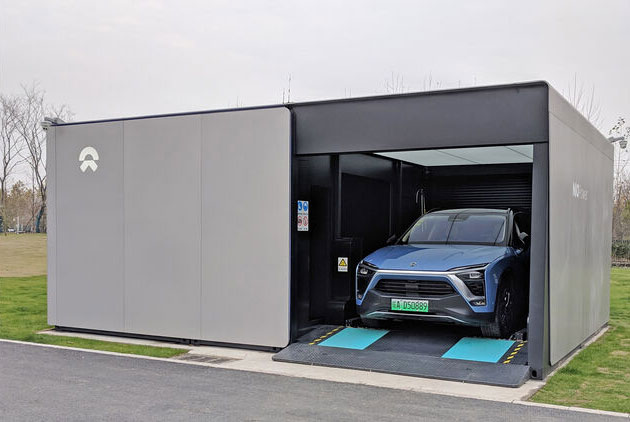The range you can drive with one battery charge is still the main criterion for many consumers when deciding on
buying an electric car or even a main obstacle not to buy one at all. While in the commercial environment, e.g. parcel delivery services, municipal equipment carriers, be it as a sweeper or vehicle for the
green keeping, planning the route well in advance is common, in private surroundings more flexibility required.
According to a survey by the ADAC, 10% of those questioned would agree a 100km range is satisfactory. 20% expect at least 200km and more than 30% want to drive at least 500km without a charging break.
Another criterion besides the range, i.e. the question
“How often do I have to charge” is the charging time, i.e. the length of the “refueling stop”.
Because the first 80% of a battery can be charged faster than the remaining 20% it is usually only charged to 80% during a charging break. Depending on the battery capacity and model of the fast charging station, this time is between 20 to 50 Minutes.
In contrast to filling up with petrol or diesel, the electric charging stations are unfortunately not generally compatible with each other so far. While pioneer Tesla wants to use its lead and therefore goes it alone with its Tesla Supercharger.
Some automotive corporations have come together and founded a charging station alliance. In a first step, 400 charging stations are planned across Europe (source: Manager Magazin).
By using the CCS (Combined Charging System) connector, at least in Europe, a certain degree of standardization is gaining ground. The CHAdeMO system, which is based in Japan, plays a minor role in in Europe.
Two Chinese electric vehicle manufacturers are taking a different approach. China’s largest electric car manufacturer, BJEV, which belongs to the BAIC Group and in which the Daimler Group is also involved, is relying on
a modular-energy-pack system with interchangable batteries.
“I wouldn’t say that this is the only sensible solution, but changing the battery will be an important alternative, especially for vehicles used for public transport.”
– Ma Fanglie, President of BJEV
In 2019, BJEV built 160 battery changing stations with the aim of expanding them quickly.
The Chinese electric car start-up NIO also started with 80 battery changing stations in 2019 and a multiplication is already planned for the following year.
